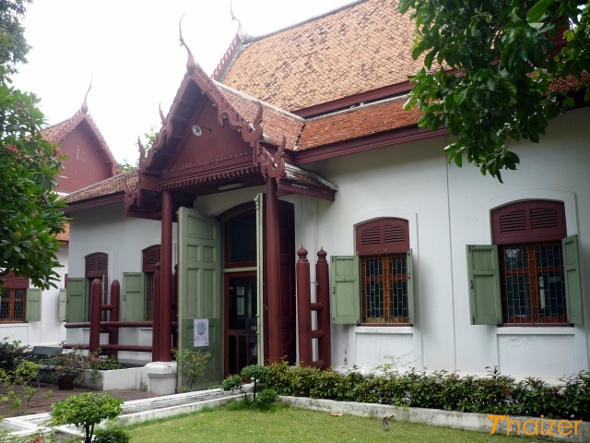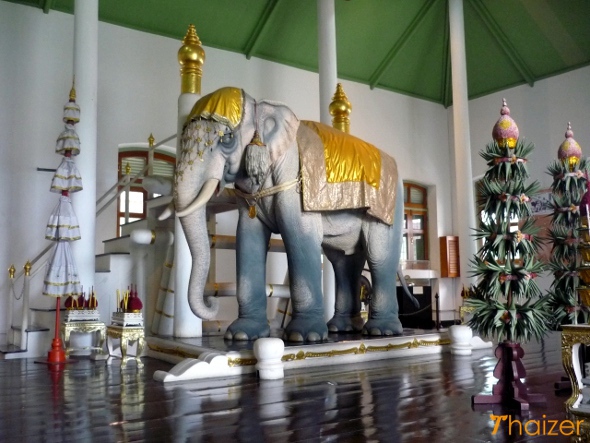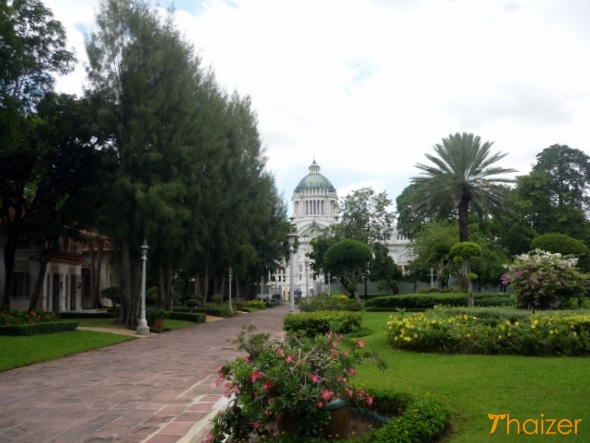One of Bangkok’s smallest and least well-known museums, the site dedicated to Thailand’s royal elephants enjoys a picturesque setting in the grounds of the Dusit Palace complex. The museum consists of two buildings, both of which were former elephant stables.

Up until the reign of King Rama IV, the royal elephants were stabled at the Grand Palace. It was King Rama V who constructed a new stable at Dusit Palace and a further stable was added during the reign of King Rama VII. During the reign of the present Thai monarch, His Majesty King Bhumibol Adulyadej (King Rama IX), the royal elephants were originally stabled at Chitralada Palace in Bangkok* which meant that the stables at Dusit Palace remained empty and unused. The empty stables were declared an important site of national heritage by the Fine Arts Department in 1974, but it wasn’t until 1988 that a proposal from the Ministry of Education led to the stables being transformed into the museum that visitors can see today.
*The Royal Elephant Stables are now located at the Thai Elephant Conservation Centre near Chiang Mai.
The Royal Elephant National Museum might leave some visitors feeling underwhelmed, but if you have a deep interest in Thai culture or history the exhibits and displays are well presented and informative. They provide some fascinating background details to the significance of the auspicious white elephants in Thailand. As well as life-size models of the royal elephants, there are all sorts of curios including tusks, sepia-coloured photos from royal ceremonies and displays depicting the Brahmin and Buddhist rituals involved in the naming ceremony for the royal elephant.

The site has connections with royalty and has exalted status no matter what it may appear like from the outside. This means you must remove your shoes before entering either of the two buildings and you should also cover your knees and shoulders and remove your hat. When I last visited in October 2012, I was the only person there and I asked the museum superintendent if it was permissible to take photos. He said it was, but if you do visit make sure you also ask for permission first to avoid causing any possible offence.
The museum is free to enter and is open daily from 08.00 to 16.00. The location is to the rear of the Ananta Samakhom Throne Hall. The Royal Elephant National Museum is sign-posted within the grounds of the Dusit Palace complex but the closest entrance to the museum is on Thanon U-Thong (U Thong Road) almost directly opposite the entrance to Dusit Zoo. With no Skytrain or metro stations nearby and a long walk in the heat from the nearest river or canal pier, the most convenient way to get here for most overseas tourists is by taxi-meter.
The museum isn’t worth a trip just by itself and after 20 or 30 minutes you may have seen and read everything you need to. But even if the museum doesn’t impress you it’s hard not be impressed by the beautiful landscaped gardens of the Dusit Palace complex which are a delight to just walk around. To the rear of the elephant museum and only a few minutes’ walk around the corner is the Viamanmek Teakwood Palace whilst to the front of the museum you won’t be able to miss the neo-classical architecture and dome of the Ananta Samakhom Throne Hall.

Just in front of that is the Royal Plaza with the distinctive Equestrian Statue of King Rama V. Also within reasonable walking distance is the Marble Temple, Wat Benchamabophit. .